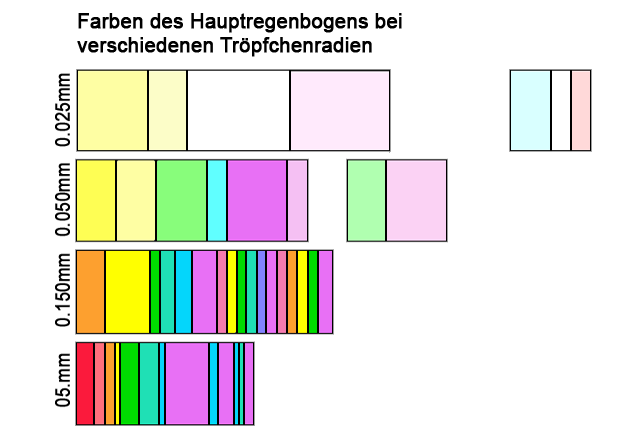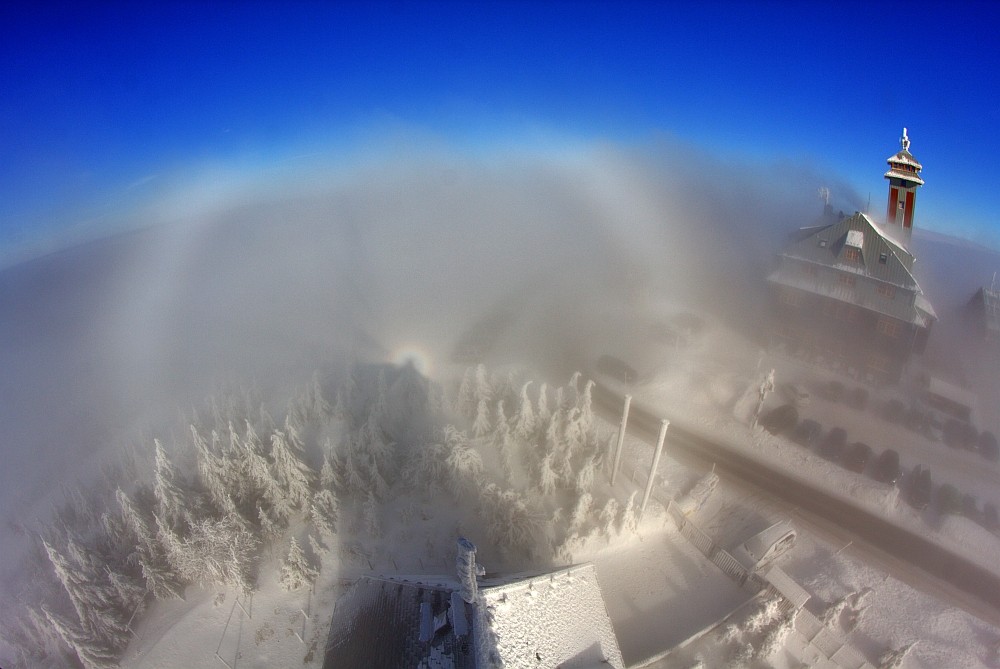Explanation
In fog, a different variation of the rainbow can be observed: the fogbow. This bow is white and its band is about twice as wide as a normal rainbow. Interference bows sometimes lie on the inside. Its radius is 42°, but it becomes smaller with decreasing droplet size.
Fog consists of very small water droplets. With droplets below 50 micrometers, the rainbow angles of the individual spectral colors overlap in such a way that they together produce white light. If the droplets are smaller than 5 micrometers, the fogbow is no longer recognizable, as the bow then becomes very diffuse and dim. Therefore, the fogbow is not always visible when the sun shines on a fog wall.

according to Pertner, Meteorological Optics
The graphic above shows how the colors and the width of the primary rainbow change with different droplet sizes. It is, therefore, possible to deduce the droplet size directly from the color sequence of the rainbow. A strong red only appears with large raindrops. You can also see that the rainbow becomes significantly wider with small droplets and is predominantly white (fogbow). It is interesting that the interference bows with small droplets are not directly on the inside of the primary rainbow, but rather there is a quite large gap found there. This gap is very clearly visible in the photo below.
These phenomena cannot be explained with pure light refraction in water droplets. They are based on the wave nature of light.
The fog bow is seen better when the fog wall is in front of the observer and there is no fog behind the observer. Otherwise, the sun's light is too weakened by the fog. In ground fog, one can stand on a small hill and look down at the fog to remedy this.

